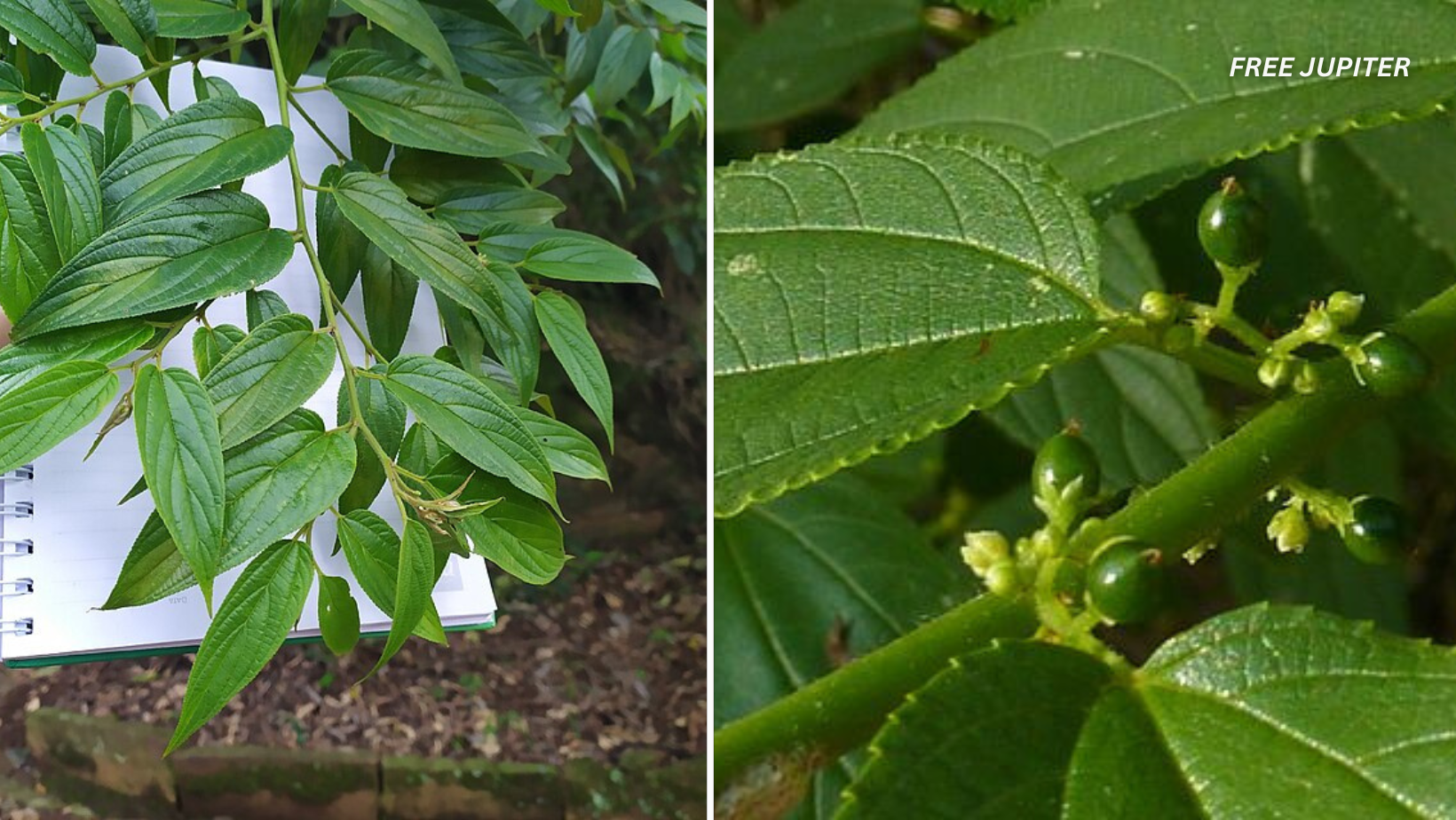Scientists have made a remarkable discovery that could reshape the future of plant-based medicine. Cannabidiol (CBD), the well-known therapeutic compound traditionally sourced from the cannabis plant, has now been identified in a completely different species: Trema micrantha Blume. This tropical plant, often overlooked and considered a common weed in parts of South and Central America, could offer an alternative and legally accessible source of CBD.
The implications are massive. Because this plant contains no tetrahydrocannabinol (THC), the psychoactive component of cannabis, it might escape strict regulations that currently limit cannabis farming and CBD production. The breakthrough, led by Brazilian researchers, offers a glimmer of hope for more inclusive and affordable access to CBD-based treatments.
In this article, we explore what makes Trema micrantha so unique, how scientists discovered its CBD content, and what this could mean for industries, healthcare, and future research worldwide.
What is Trema micrantha Blume?
Trema micrantha Blume is a fast-growing shrub or small tree found throughout tropical and subtropical regions of the Americas. It belongs to the Cannabaceae family, the same botanical family that includes hemp and cannabis. Despite this connection, Trema micrantha has historically been written off as an invasive weed, commonly found on roadsides, fallow farmland, and disturbed forest edges.
It thrives in poor soil, requires little water, and reproduces rapidly, which makes it ideal for environmental restoration efforts. Ecologists have even used it for reforestation projects in degraded lands due to its resilience and nitrogen-fixing properties. Yet, until now, its medicinal potential had largely gone unnoticed.
Local communities across Brazil and Central America have long used parts of the plant for basic herbal remedies, including for skin issues and inflammation. However, the scientific community had not deeply studied its chemical composition until recently.
The Landmark Discovery of CBD in a Non-Cannabis Plant
A research team from the Federal University of Rio de Janeiro, led by molecular biologist Dr. Rodrigo Moura Neto, began a study of native plants to identify their bioactive compounds. Their focus shifted to Trema micrantha after preliminary studies hinted at interesting chemical activity in the plant’s flowers and fruit.
Using advanced techniques such as gas chromatography and mass spectrometry, the scientists detected the presence of cannabidiol (CBD) in the plant, specifically in its floral components. Even more surprising, no THC was found. This discovery marked the first time CBD was found in a plant completely unrelated to traditional cannabis or hemp.
Dr. Neto emphasized the importance of the absence of THC. “This plant does not fall under existing cannabis regulation, which could make research and product development significantly easier in many countries,” he said in a media interview.
The Brazilian government responded quickly, awarding a research grant of 500,000 reals, roughly US$104,000, to support further investigation over the next five years. This funding will enable researchers to continue testing the plant’s potential, including its ability to yield scalable CBD production.
Why This Could Be a Game Changer for CBD Production
The CBD market is booming, with consumers worldwide seeking alternatives to pharmaceuticals for managing anxiety, insomnia, chronic pain, and inflammation. However, access to high-quality CBD is limited in many regions due to legal restrictions, high costs, and complex cultivation demands. Trema micrantha may solve several of these problems.
Legal Simplicity
Cannabis is tightly regulated in most countries, even when it contains little or no THC. This makes it difficult for companies and researchers to work with it. Since Trema micrantha does not contain THC, it may not be classified as a controlled substance. That would allow researchers, farmers, and businesses to explore its benefits with fewer legal hurdles.
Lower Production Costs
Cultivating cannabis, especially indoors, is resource-intensive. It demands controlled lighting, temperature, irrigation, and ventilation, along with careful THC monitoring. By contrast, Trema micrantha grows wild in many climates and requires little care. This could reduce production costs and make CBD more affordable to consumers.
Sustainability Of Cannabis Farming
Environmental concerns around cannabis farming include excessive water usage, pesticide runoff, and land degradation. Since Trema micrantha already grows in neglected environments and even improves soil quality, cultivating it could benefit local ecosystems instead of harming them.
Broader Access for Developing Countries
Many countries with restrictive cannabis laws also face healthcare shortages. If Trema micrantha-based CBD becomes legally viable and easy to grow, it could be integrated into traditional medicine systems or community health programs without the controversy tied to cannabis.
The Scientific and Medical Potential
This discovery does not just open up a new source of CBD. It also raises new questions in plant biology and pharmacology. How did Trema micrantha evolve to produce CBD? Are there other plants that contain cannabinoids that we have not yet discovered? And is the CBD from Trema micrantha as therapeutically effective as CBD from cannabis?
Researchers are already investigating the plant’s biosynthetic pathways to understand how it produces CBD. Early hypotheses suggest that its evolutionary relationship within the Cannabaceae family may have enabled it to retain certain cannabinoid-producing capabilities, even as it diverged from hemp and marijuana millions of years ago.
Future studies will also look into whether the plant contains additional minor cannabinoids or related compounds. These “entourage” compounds can enhance the effect of CBD and are increasingly being studied for their own health benefits.
Challenges and Next Steps
Despite its promise, the path forward is not without obstacles. Here are some challenges scientists and businesses may face.
Efficient Extraction
CBD concentrations in Trema micrantha are still being studied. If levels are low, it may require large-scale harvesting and advanced extraction methods to make commercial production feasible. Researchers must develop scalable techniques that do not damage the compound or make the process cost-prohibitive.
Regulatory Clarification
Even if Trema micrantha does not fall under cannabis regulations now, that could change. Governments may create new laws specifically for it, especially if demand spikes. Regulatory clarity will be essential to avoid future legal uncertainty.
Market Trust
Consumers are familiar with cannabis-derived CBD. Introducing CBD from a lesser-known plant could create skepticism. It will take time, research, and education to convince the public and medical professionals that Trema micrantha-derived CBD is just as effective and safe.
Intellectual Property and Ethical Sourcing
As interest grows, companies may rush to commercialize the plant. Ethical questions about biopiracy, indigenous knowledge, and fair compensation for local communities will need to be addressed from the beginning.
What Experts Are Saying
Experts around the world are cautiously optimistic. Dr. Ethan Russo, a neurologist and renowned cannabis researcher, called the discovery “potentially transformative.” He noted that having another natural CBD source could disrupt the market in favor of cheaper and broader availability.
Meanwhile, plant geneticist Dr. Carla Oliveira emphasized the importance of biodiversity. “This proves why protecting ecosystems and native flora is so important. We have no idea what medicinal treasures may still be hidden in so-called weeds,” she said in a recent interview.
Global Implications Of Cannabis
The ramifications of this finding extend well beyond Brazil. If CBD production from Trema micrantha proves viable, it could impact international trade, pharmaceutical research, and agricultural development. Countries without legal cannabis industries could build their own CBD sectors without violating international drug treaties.
It may also shift how scientists search for medicinal compounds by looking beyond well-known plants and considering understudied species with unique evolutionary paths.
More Than Just Scientific Curiosity
It is a potential paradigm shift in cannabinoid research and production. A plant once considered useless could become a cornerstone of modern plant medicine, offering legal, sustainable, and affordable access to one of the world’s most sought-after therapeutic compounds.
The road ahead will require careful study, ethical commercialization, and global cooperation. But if successful, this humble shrub could be a green goldmine for future medicine, without the controversy that cannabis still carries.









